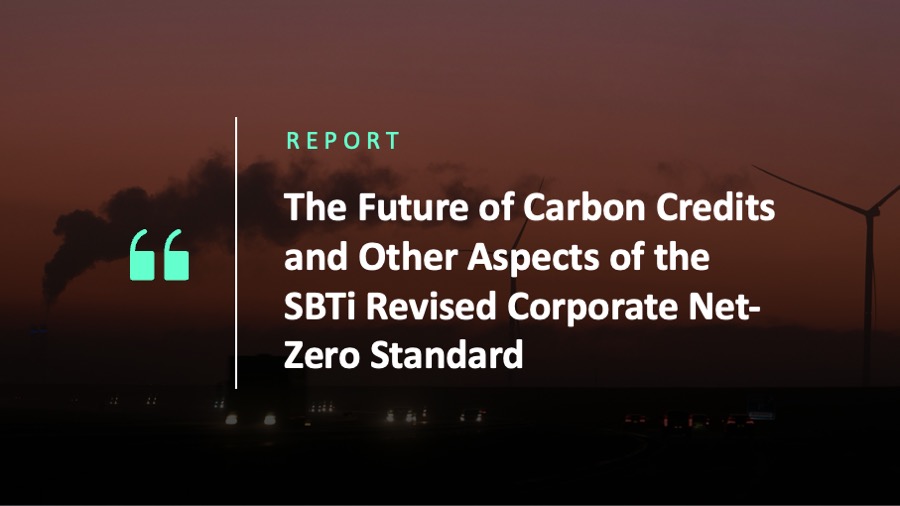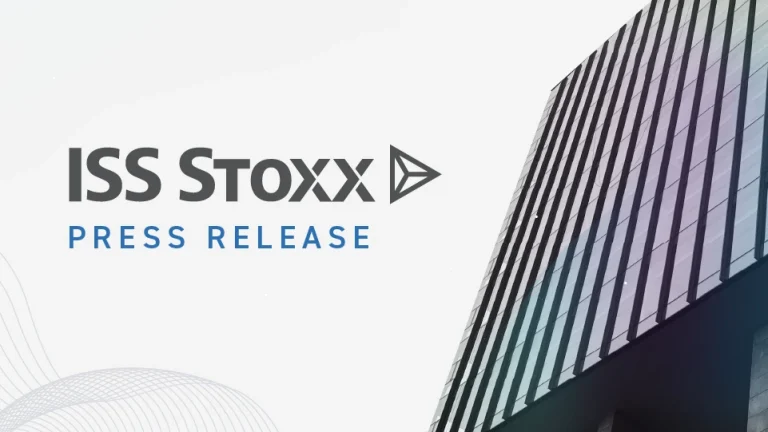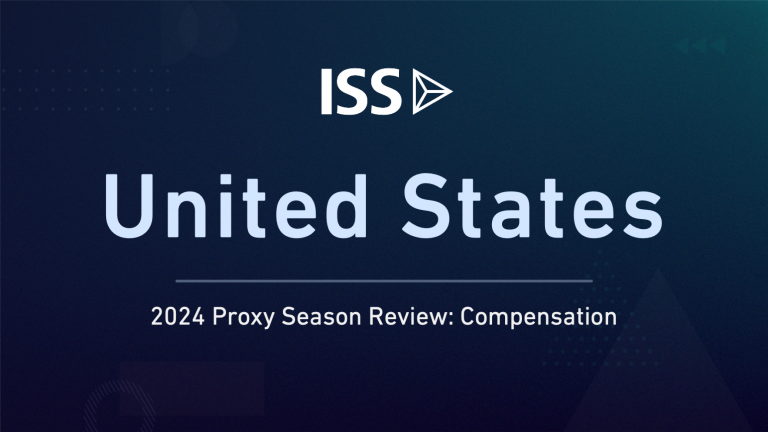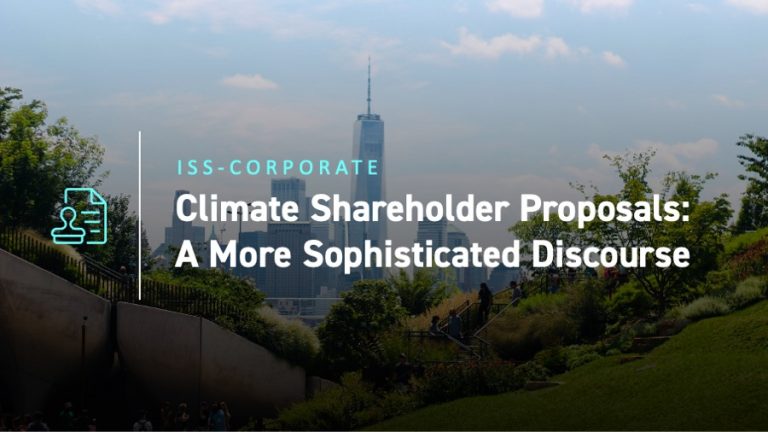The Science Based Targets initiative (SBTi) published a statement in early 2024 alluding to plans to revise their position on the use of environmental attribute certificates, including Carbon credits, in the formulation of emissions reduction targets. This statement was followed by a revision of the SBTi Corporate Net Zero standard.
The ISS ESG Climate team produced an article at the end of 2024 titled “Carbon Credits: An Overview of a Climate Controversy.” The article explains some of the pros and cons of carbon credits, thereby shedding some light on the overall controversy linked to the SBTi statement.
The SBTi finally published, in March of this year, the first draft version of their revised framework. The post examines the major changes proposed in this first draft, which is still under consultation.
To Offset or Not to Offset?
Following some uncertainty about the planned revisions, SBTi finally provided clarification within their first draft of the Corporate Net-Zero Standard Version 2.0 (open for consultation until June 1st). SBTi addresses the controversy early in the document, stating that “This draft standard continues to prioritize direct mitigation” (p. 8). This statement makes clear that SBTi’s initial position will not change: offsetting cannot be considered a substitute for emissions reductions across a company’s operations and value chains.
The SBTi maintained the significant position of seeking to achieve real economy emissions reductions to maintain the Paris agreement goals and a global temperature rise below 1.5 degrees. This stance received both favorable and critical responses.
While the SBTi clearly set boundaries on the use of offsets to achieve emissions reductions within a company’s value chain, the Net-Zero draft Version 2.0 did not completely leave out the use of carbon credits and offsets. As discussed below, the use of offsets is mentioned directly and indirectly, including where offsets might play a role: residual emissions and removals, indirect Scope targets revisions (Scopes 2 & 3), and mitigation beyond the value chain.
Residual Emissions and Removals
SBTi builds on their concept of neutralization introduced in Version 1.0 of the corporate Net Zero Standard, which allows the use of offsets and carbon credits to neutralize all residual emissions after reaching Net Zero mid-century. Where previously offsets use was allowed in the Net Zero framework starting only from the company’s Net Zero target year, SBTi is now introducing the possibility of a progressive decrease over time between the present and the Net Zero target year (p. 64).
This new approach has attracted some concern. A Carbon Market Watch commentary expressed appreciation for how SBTi limited the scope of application of carbon removal in the target. However, the same commentary said more clarity is needed about how companies should determine their residual emissions to avoid loopholes and the use of removals in actively reaching Net Zero.
Scope 2 Targets and the Use of Renewable Energy Certificates (RECs)
The new draft SBTi requires Scope 2 targets to be separated from Scope 1 targets to address the use of renewable energy certificates (RECs) and their impact on the geography of the grid and operations where the renewable certificates are sourced from (p. 58). In the current version of the Corporate Net Zero standard, companies can use a market-based approach for emissions baselines, which can often make a company’s Scope 2 emissions look far lower than they are when using a location-based approach (p. 9). Standards or regulatory requirements on climate disclosures, such as ISSB or CSRD/ESRS in Europe, have tried to bring transparency on Scope 2 emissions by requiring the disclosures of Scope 2 emissions on a location basis, separately from market-based Scope 2.
With the new draft, SBTi tries to address the use of RECs as an offset for Scope 2 emissions. A number of studies have shown that those certificates had little to no impact on the decarbonization of the grid, mostly due to the fact they are sold unbundled, which makes it difficult to trace the original renewable sources supply.
SBTi requires transparency on the sourcing of the energy carrier, and plans to add additional criteria following the consultation process, informed by the call for evidence that SBTi conducted in 2024 on the topic (pp. 58-59).
The revised standard also acknowledges that some companies may lack access to zero-carbon electricity in certain grids and therefore allows flexibility through sourcing zero-carbon electricity from other grids as a time-limited alternative (pp. 58-59).
Scope 3 Targets Revisions
Throughout the new draft, SBTi refers to the use of indirect mitigation measures. Under the Scope 3 target-setting requirements, the option to “employ effective indirect mitigation measures on an interim basis” is introduced (p. 61). This provision acknowledges the difficulty of implementing direct decarbonization strategies for the emissions sources intrinsic to Scope 3 emissions traceability challenges.
While the SBTi provides some guidance on how those indirect mitigation measures should be reported and on the type of policies that should accompany such indirect Scope 3 mitigation (p. 62), further clarification may help to ensure the safeguarding and credibility of indirect mitigation measures.
Apart from the issue of using offsets within the value chain of a company, the new draft revisions describe most significant changes to Scope 3-related requirements.
Table 1: SBTi Changes to Scope 3-Related Requirements
| Current Framework | Suggested changes in V2 | |
| Scope 3 targets mandatory for | Scope 3 >40% total emissions | Category A companies only |
| Scope 3 targets horizons | Near term & long term SMEs only near term | Near-term targets only Long term under consultation in V2 |
| Scope 3 targets coverage/boundaries | Near-term targets: 67% of Scope 3 emissions Long-term targets: 90% of Scope 3 emissions | Sector-based Scope 3 categories materiality Emissions-intensive activities |
| Targets formulation | Emissions reduction targets | Greater emphasis on non-emissions metrics and targets |
Source: SBTi Corporate Net-Zero Standard Version 2.0
While SBTi has yet to address some important elements still under consultation, such as Scope 3 long-term targets, the current draft contains two major proposed changes:
- Scope 3 targets relief for ‘Smaller’ entities
- New definition of Scope 3 materiality and additional targets
Scope 3 Targets Relief for ‘Smaller’ Entities
In the new draft, SBTi introduces company categorizations to differentiate target-setting requirements. Companies in Category A, for large or medium-sized companies operating in higher-income geographies, are required to set near-term targets across all emissions scopes and long-term targets for Scope 1 & 2. Long-term targets for Scope 3 emissions are still under discussion for Category A companies. Companies in Category B, for small and medium-sized companies operating in lower-income geographies, are required to set near-term targets for Scope 1 & 2 only, with no mandatory targets for Scope 3 (pp. 8, 11).
New Definition of Scope 3 Materiality
The new SBTi approach, for Scope 3 targets to be set according to the most material Scope 3 categories on a sectoral basis, is the same approach the ISS ESG climate team has been taking to assess the ambition of an issuers’ targets. This approach also aligns with most reporting standards and regulations where reporting is usually driven by financial materiality or double materiality.
However, SBTi also goes beyond this approach and introduces targets for Scope 3 emissions-intensive activities, providing thresholds and pre-defined lists of those material activities per sector (Annex D).
From a practitioner’s perspective, these provisions of the draft mean that for each material Scope 3 category and emissions-intensive activity identified, companies will have to set targets for each independently. The target setting will be combined with an additional tier-1 supplier engagement target and sector-specific targets such as fossil fuel activities and use of sold products (pp. 61-62).
This level of granularity is a natural evolution of target-setting refinement over the years and may allow for assessing with more precision issuers’ level of ambition and commitment towards the transition to a lower carbon economy. However, the treatment and tracking of targets for investors is a rather complex process currently, when multitudes of target combinations currently co-exist. This level of granularity and also the high number of key performance indicators to choose from will most likely make tracking the ambitions of issuers more complex.
Beyond Value Chain Mitigation
The new draft standard introduces additional recognition for companies’ efforts, within a specific framework for high-quality projects, to mitigate emissions beyond their value chain (pp. 9, 12). This approach means that companies could be positively rewarded for taking responsibility for their climate impact without having to resort to the use of carbon credits solely. However, reporting on those types of mitigation actions tends to be embedded in decarbonization strategies associated with emissions reductions targets, which makes it even more difficult and complex to assess the credibility of an issuer’s transition plans.
Conclusion
The SBTi clarification on the use of offsets within a company’s value chain has put an end to months of speculation and controversy. SBTi is expanding emissions scope coverage and target setting overall, specifically around Scope 3.
Explore ISS STOXX solutions mentioned in this report:
- Identify ESG risks and seize investment opportunities with the ISS ESG Corporate Rating.
- Use ISS ESG Climate Solutions to help you gain a better understanding of your exposure to climate-related risks and use the insights to safeguard your investment portfolios.
By:
Candice Coppere, Head of Climate & Nature Innovation Lab, ISS ESG



